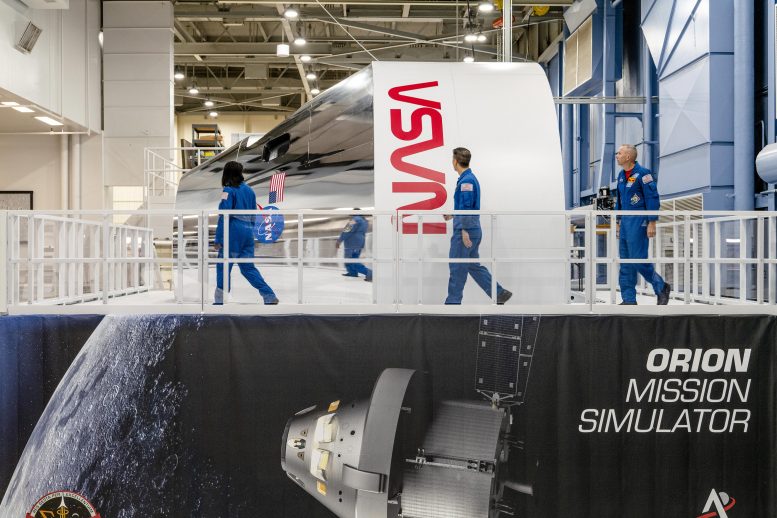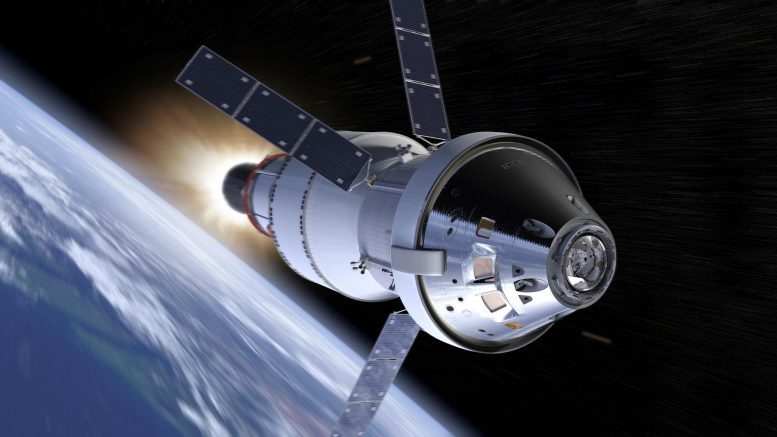
NASA Astronauts Stephanie Wilson, Jonny Kim, and Randy Bresnik take a look at the Orion spacecraft simulator that recently arrived at the agency’s Johnson Space Center in Houston. The simulator provides the ability for astronauts, engineers, and flight controllers to train and practice for scenarios during Artemis missions to the Moon. The interior of the simulator is being outfitted with Orion’s display and control system and crew seats to mimic what astronaut will experience during liftoff to the lunar vicinity and on their way back home to Earth.
Kim and Wilson are among the 18 astronauts recently named to the Artemis Team of astronauts eligible to be selected for Artemis missions to the Moon. Bresnik is currently the assistant to the chief of the astronaut office for exploration. NASA is targeting 2023 for Artemis II, the first mission with crew, with the Orion Spacecraft set to launch atop the agency’s Space Launch System rocket. The mission will send astronauts around the Moon and return them back to Earth, a flight that will set the stage for the first woman and next man to step foot on the Moon in 2024.

NASA’s Orion spacecraft is built to take humans farther than they’ve ever gone before. Orion will serve as the exploration vehicle that will carry the crew to space, provide emergency abort capability, sustain the crew during the space travel, and provide safe re-entry from deep space return velocities. Orion will launch on NASA’s new heavy-lift rocket, the Space Launch System.
Never miss a breakthrough: Join the SciTechDaily newsletter.
4 Comments
None of that is going to help those poor volunteers. That capsule is going to end up docking with an asteroid in the Sirius star system. We will never see them again.
The guy that commented above about docking with an asteroid is smoking crack.
wow it’s shiny
Not just a testimony to the science involved but a work of art. I know lots of people who would love to sit at the controls. They are just put off by the incredibly hard work the Astronauts have gone through to get to sit there. Carry on Heroes of Earth!